San Cristobal de las Casas: The Maya Passage
- on 12.19.08
- Mexico
- 2 Comments
- Digg
- Del.icio.us
Sunday, December 14
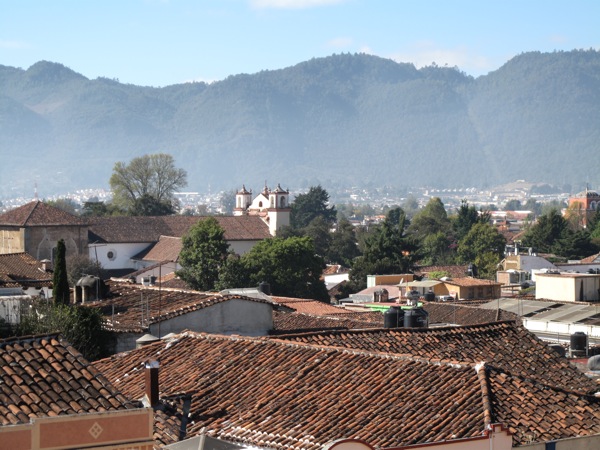
San Cristobal de Las Cases is the geographic center of the state of Chiapas, and is an enchanting colonial city surrounded by indigenous villages with the largest Maya population in Mexico.
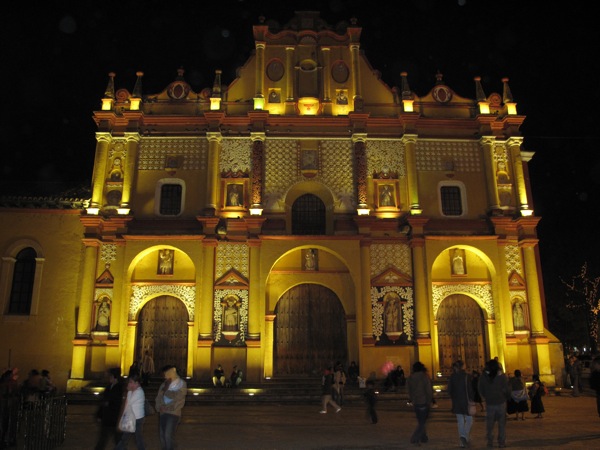
The city holds plenty of colonial churches, colorful buildings with ornate metal and wood latticework, and a great number of cafes, restaurants and of course street markets.
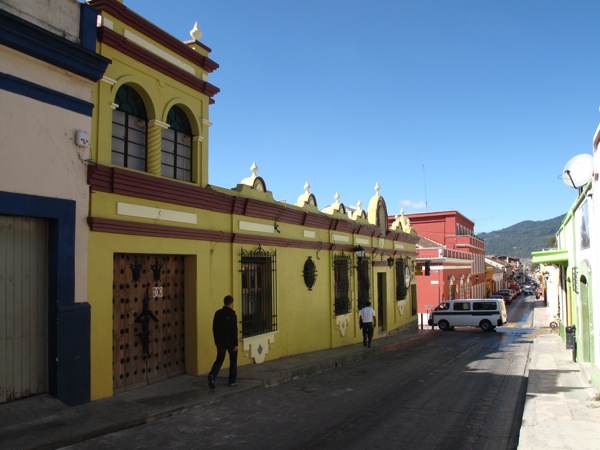
After a very unpleasant night – to me it was the worst hotel room we have stayed at so far, mainly because it was cold, dirty, and the sheets were so worn out that they felt unwashed – we decided to move to a different place. Fortunately, the sister hotel around the corner where we have parked our bikes, had much nicer accommodation for the same price. We made the move, had a traditional breakfast of eggs and tortillas and decided to ride to a nearby Mayan village of Chamula to visit the church we had read about in the book, described as “one of the most moving sights in Mexico.”
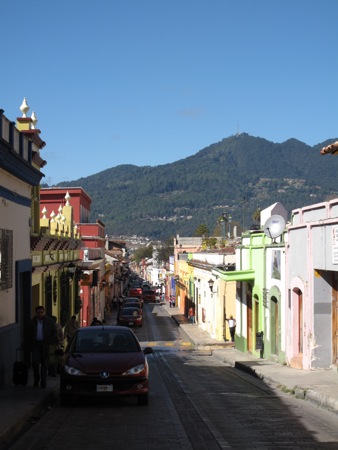
We took one bike, and I have to say, it felt much more challenging to me riding on the back of the bike. It felt very limiting in terms of space, movement and “personal freedom.” I give a lot of credit to women who do these adventures as passengers. I don’t think I could have lasted a month being behind Matt’s back day after day after day.
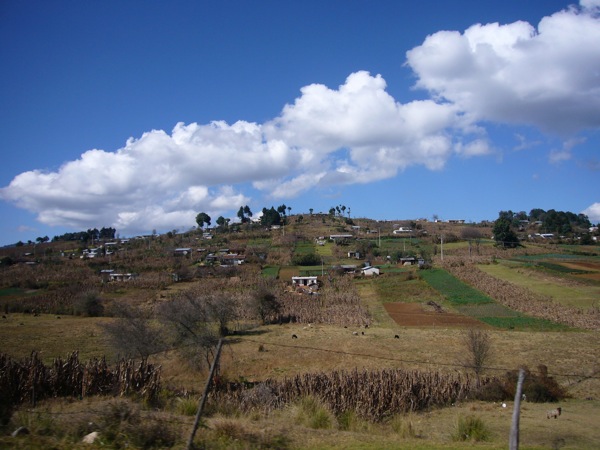
The road took us through a mountainous scenery with basic hut houses and farming gardens spread around the hillsides. We arrived to the main plaza that consisted of The Church and a market that catered to tourists as well as the locals, selling everything from food and gifts to electronics and live turkeys.

By now we are used to little kids who swarm you at once, and will not leave until you buy one of the unnecessary trinkets they are selling. There were also very strange looking groups of men dressed in traditional clothes that looked like some kind of ceremonial outfits marching solemnly across the plaza. We were warned by the book not to take pictures of the locals, which was also the rule for visiting the church – no pictures inside.
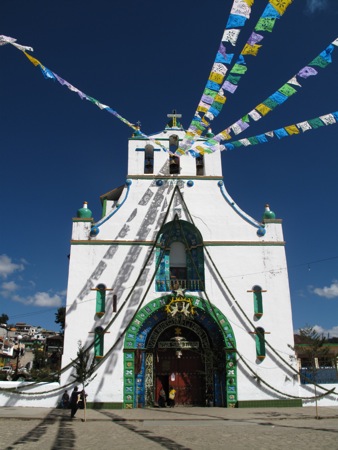
Going into the church was an incredibly humbling and moving experience. The local population has retained much of their unique cultural identity, blending traditional animist beliefs with Catholicism.
The inside of the church was glorious – the floor was covered with pine needles exuding a balmy fresh smell; along the walls were glass boxes containing statues of the saints adorned with offerings of food, mirrors, and hundreds of candles. The locals were either gathered in small family groups quietly interacting in their native tongue, or settled in front of one of the saints by themselves praying and chanting. There was also a group of local men and boys who brought in a pine tree and were buzzing around noiselessly decorating it with garlands of small colorful fruit. A strong spiritual feeling overtook me at that moment. I felt my heart expanding and tears welling up. I looked at Matt and he seemed to be going through the same. It felt like we walked into a sacred space and were being blessed and cleansed by the divine spirit, the caretaker of these incredible mystical people. I have never in my life experienced such powerful transcendental state while being in a church.
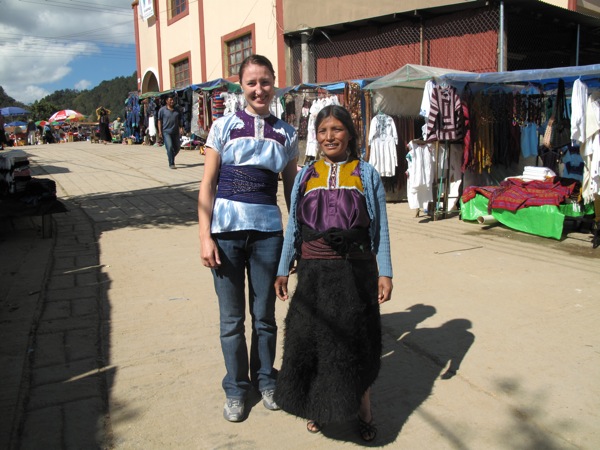
We walked out feeling calm and peaceful, and what better way to incite your spirituality but a little bit of shopping. All women in the village were wearing these great looking silk embroidered shirts. I could not pass on one and after some bargaining was outfitted by a local woman with a pretty shirt and a traditional belt to go with it.
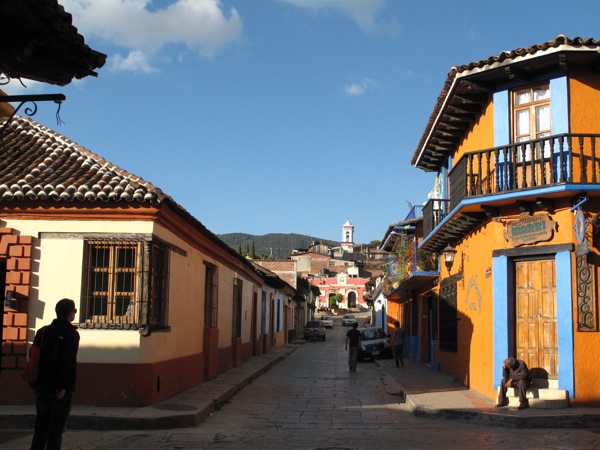
After coming back into town, we headed to Casa Na-Bolom, a museum and center for the study of indigenous cultures, particularly the Lacadon Maya. From the 1940 to 1990’s this was the home of Danish explorer and anthropologist Frans Blom and his Swiss wife Gertrude, an anthropologist and photographer. The couple spent their life studying, documenting, photographing and lobbying for the protection of indigenous cultures. They were the only white people who became close friends with the last Mayan king and Gertrude was called the Queen of the Jungle by the Mayans for her efforts on their behalf. Her photography collection consists of over 55,000 photographs of the indigenous people – the largest collection of its kind in the world. Today, Na-Bolom is a non-profit organization that brings together anthropologists, scientists, doctors and volunteers from all over the world to study and work to help save the forests and the disappearing Mayan populations.
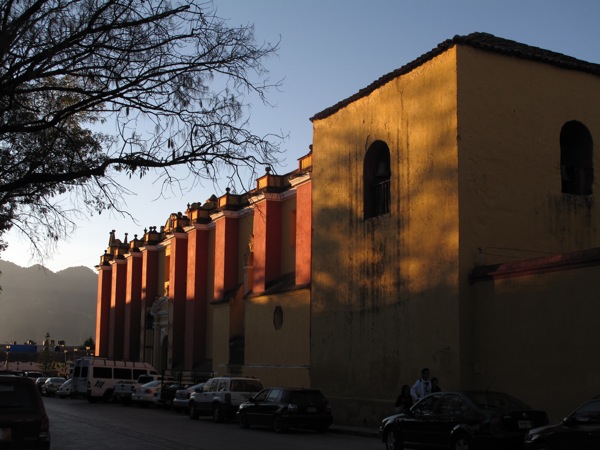
Learning about the enormous ecological, cultural and political impact these two individuals had during the course of their lives and their legacy for generations to come made me think about the purpose of our own lives. Is it possible to live in comfort, and have the materials things we all desire for ourselves, but also make an impact on the lives of others, better their lives not just by doing administrative work in an office but out there in the field? Or do I need to give up one in order to pursue the other? Is there a way to accomplish both? How best to live a meaningful life? These questions kept lingering in my head for the rest of the evening.
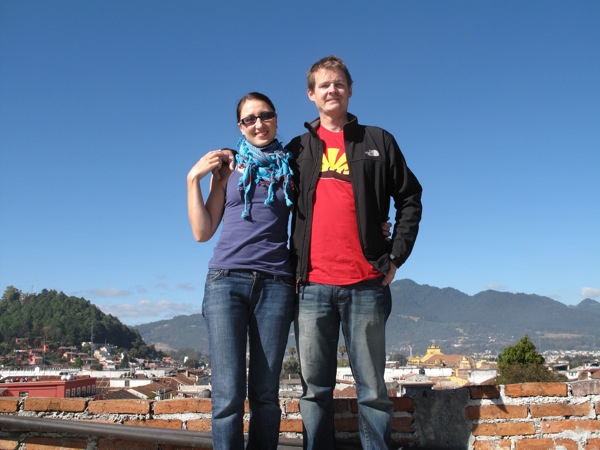
I think this is the significance of this trip for us as individuals and as a couple. Through experiencing so many different cultures and meeting people with different backgrounds and views on life, locals and other travelers, we will get closer to grasping the purpose of our own lives, find out what our dream life looks like and hopefully in the process inspire and help people around us.
Leave a Reply
You must be logged in to post a comment.